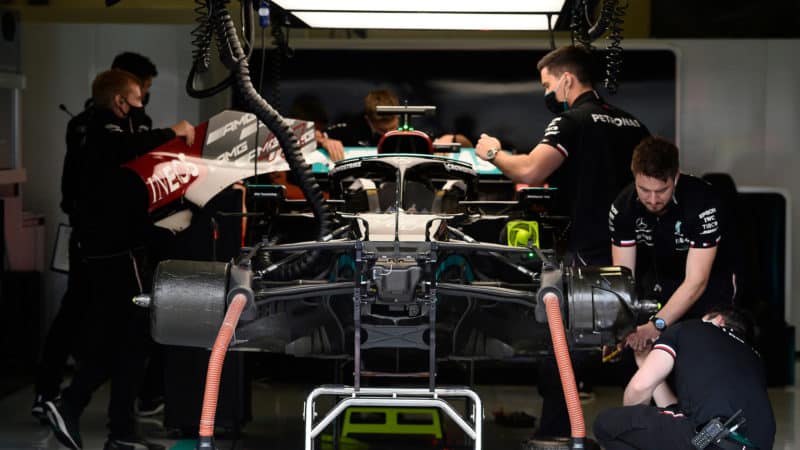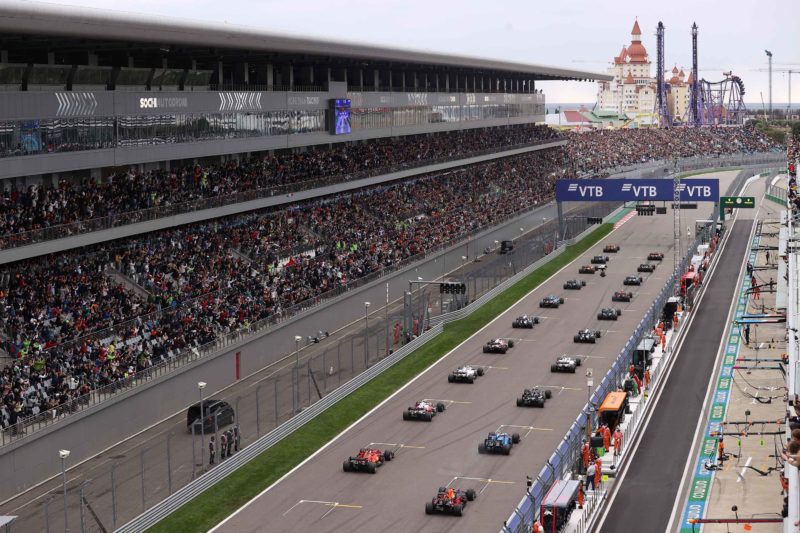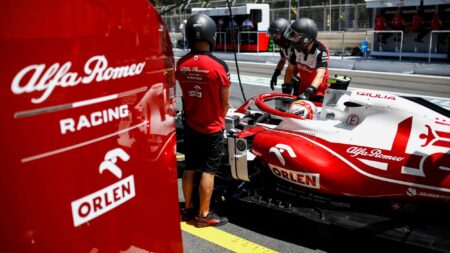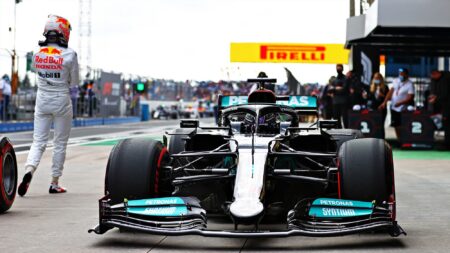All manufacturers are dancing on the edge on reliability, and all are pushing the performance envelope, especially the two title contenders. Some top runners have also lost engines to accident damage, further ramping up the stress.
Mercedes in particular has suffered with reliability issues, some very public – as with practice failures for Lewis Hamilton and Sebastian Vettel at Zandvoort – and others less so. A new unit that was supposed to run by Valtteri Bottas at Spa failed before it took to the track, and then the fresh one that he did eventually take at Monza had issues on Friday in Russia, and had to be replaced on race day in Sochi.
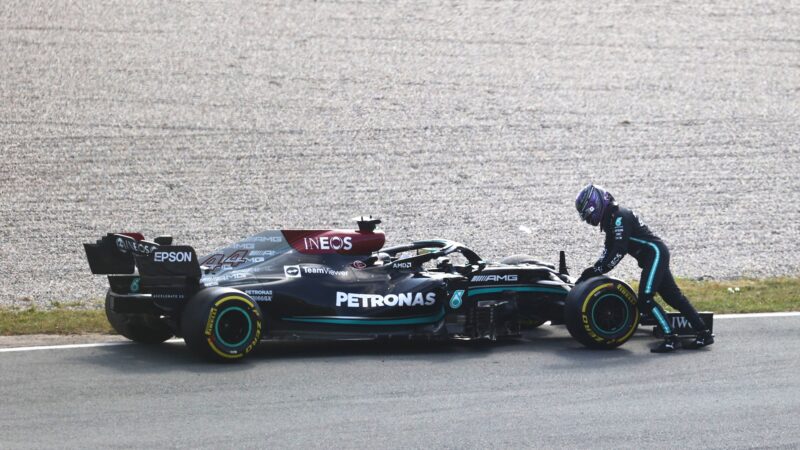
Hamilton suffered engine failure in practice at Zandvoort
Dan Istitene/F1 via Getty Images
Lewis Hamilton took a new V6 on Turkey on Friday morning. It was just the one fresh PU element, as the team is confident that other older parts mated to it will survive the season. It thus generated a 10-place penalty rather than sending him to back of the grid.
Verstappen got lucky in Russia, taking a full penalty hit that put him to the back, and yet emerging from the chaos of the late rain on race day with second place, a pretty good reward in the circumstances.
It remains to be seen what Hamilton can get out of the Istanbul weekend, although the good news for him was that Verstappen and Red Bull have been struggling. A win here with Hamilton starting down the field is by no means guaranteed for the Dutchman.
Mercedes and Red Bull can only hope that power units play no further role in determining the destination of the 2021 championship.
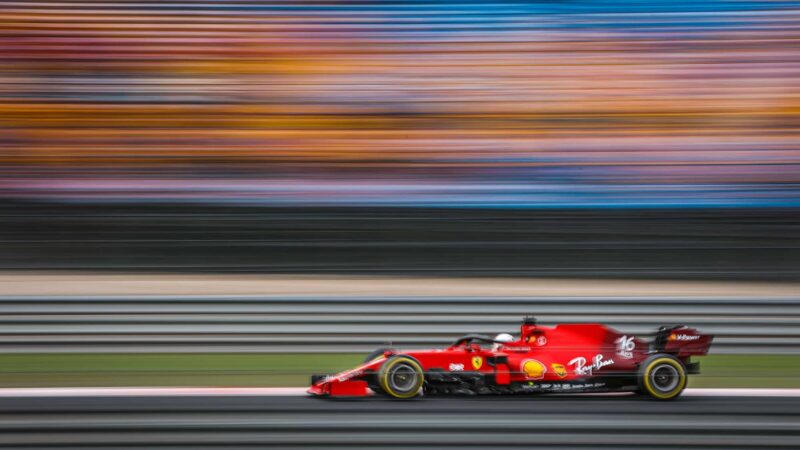
Ferrari upbeat about new power unit spec
François Flamand / DPPI
It’s not just about the winners of course, and the latest Ferrari upgrade gives the Maranello outfit a useful boost in its battle for third with McLaren, as well as providing useful development for 2022.
“I feel like we are working very well as a team whether it’s on the car, the engine,” said Charles Leclerc. “Every time we’ve brought something, it was something in the right direction. And that was the case also at the last race for the new package.
“So it’s great to see that and it gives me the belief that we’ll keep doing positive steps in the right direction, especially for next year where it is a big opportunity for us to come back to winning. What I can say is that we are working the right way to perform at our best next year.”
“Obviously I’m excited about the power unit,” said Sainz. “I welcome all the development and all the effort that has been made to bring this forward these few races to try it this year. It looked promising in Sochi on Charles’s side.”
Sainz agreed that the best place to test new developments was on track: “Every month that we can anticipate these things, every month that we can go back to the dyno and keep chipping away at it, because as you have seen we have a deficit in power still, a decent deficit that we are trying to correct.”
Ferrari certainly seems to have momentum heading into next year. As far as 2022 is concerned the biggest question mark has hitherto hung over Honda, and the transition into the stewardship of Red Bull Powertrains. How could a racing team take over a works engine project and continue to run it at the same level, inevitably operating with one eye on the overall cost?
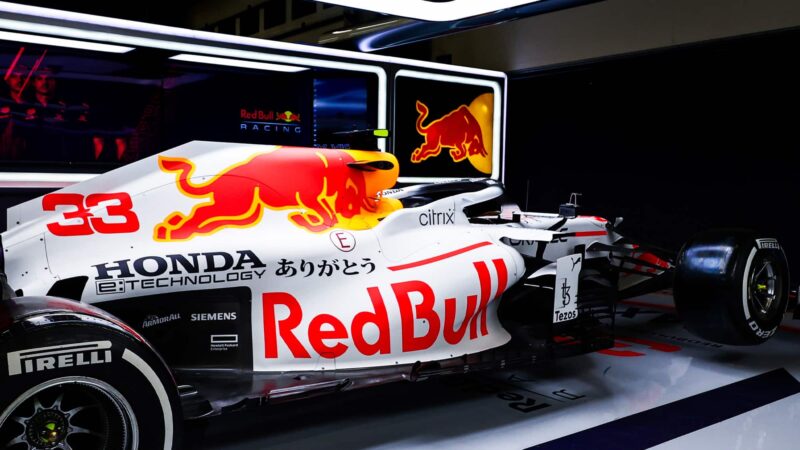
Honda/Red Bull relationship will continue into next year and beyond
Red Bull
Negotiations have been ongoing for months, and on Thursday the two parties revealed more details of how it will work.
No one expected that Honda would walk away after this year’s Abu Dhabi finale and simply hand Red Bull and AlphaTauri a stock of engines, and that has proved to be the case. It has now been confirmed that Honda will remain closely involved throughout the key transition year of 2022, while the new company in Milton Keynes finds its feet.
Honda says it “will support Red Bull Powertrains in building the 2022 PU and also provide trackside and race operation support from Japan throughout the 2022 season, and from 2023, Red Bull Powertrains will take responsibility for all manufacturing and servicing of Red Bull Racing and Scuderia AlphaTauri’s engines.”
